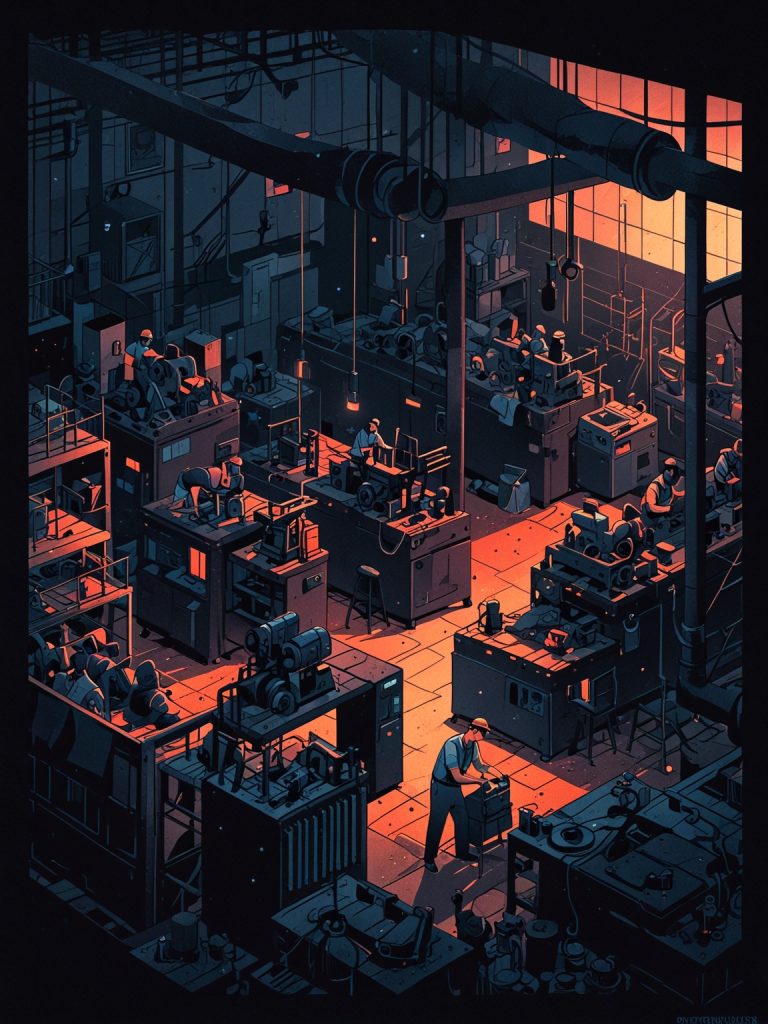Do you feel stuck on a never-ending wheel like a hamster? Have you ever wondered how our great-great-grandparents worked 16-hour shifts without going into flames? Fasten your seatbelts, as we are going to go on an exciting journey through the maze of work-life balance—or lack thereof—in the 1800s. It’s a tale of perseverance, dirt, and—surprisingly—some insightful lessons for our own struggle for a more relaxed work environment.
Imagine not having access to contemporary amenities like running water or electricity to make getting out of bed earlier in the morning easier. Whether it was in factories with hazardous machinery, on fields needing hard physical labor, or in homes with never-ending chores, the day started with backbreaking labor.
Weekends were a luxury and holidays were few, usually associated with religious observances, for our forefathers. There was no such thing as a “weekend” in the modern sense. People were under pressure from social conventions and financial needs to work long hours, sometimes in very difficult conditions.
Our great-great-grandparents were able to find time for community and pleasure while working long hours. Sunday parties, neighborhood festivals, and group rituals offered few breaks from the never-ending grind. People had a sense of comfort and connection at these times, which was essential to their mental and emotional well.
Surprisingly, the hard reality of their everyday existence also imparted some important lessons. They frequently discovered happiness in the small things in life, the connections they cultivated, and a deep feeling of belonging. They can serve as an inspiration to us in the fast-paced world of today, when technology has made it difficult to distinguish between work and home. They have managed to maintain balance in the face of extraordinary challenges. Their adaptability, tenacity, and capacity to find joy in the little things serve as a reminder that work-life balance is not a modern luxury, but a timeless necessity.
Let us take a moment to reflect on the past and draw lessons from it as we manage the demands of our current jobs and endeavor to achieve a better work-life balance. We can find strength in connection, joy in simplicity, and balance in the very human parts of our lives.
TL;DR
- 19th-century workers endured grueling 16-hour shifts, often with meager wages and poor living conditions.
- The fight for worker rights has a long history, with early reforms like the Factory Act of 1833 paving the way for better working conditions.
- Modern challenges like the gig economy and the fight for a living wage show that the struggle for fair work continues.
- You can learn from the past and get involved in advocating for better worker rights today.

Hi there, adventurer of time! Are you feeling overburdened by your 9–5 job? Remember our friends from the 1800s, who worked six days a week, huge 16-hour shifts. That’s what I would describe as commitment, or even desperation. But really, how on earth did they work? Let’s go back in time to witness how these resolute laborers were able to, well, manage.
You’re right—first things first. Most likely, sleep was a luxury they could only imagine having. Living spaces were frequently small and situated close to those factories that emitted smoke. Yes, there was essentially no commute, but at what cost? Instead, picture yourself nodding off to sleep to the soothing sound of gears clanging.

What is the cause of these extraordinary hours now? You really did hit the mark, though. It was survival mode only. The wages were extremely low, not sufficient to cover the cost of a modest meal and a roof over your head. Put away your fancy lattes and avocado toast; these people were having trouble putting food on the table. Not to mention that entire families—including kids as young as eight—were frequently had to work long hours in order to make ends meet. Can you image the anguish a parent would feel knowing that their child’s education and health were compromised in order to make ends meet?
Fortunately, things didn’t stay that way indefinitely. The 1830s saw a shift in the tide. Distressing interviews with juvenile laborers (such as the pitiful Matthew Crabtree, who was so exhausted that he could hardly eat) provoked fury. This ultimately resulted in the Factory Act of 1833, which made history. By today’s standards, though—no child under nine working in factories?—this was hardly a luxurious break. revolutionary!). However, it was a vital beginning on the arduous path towards labor rights.

What about that illusive balance between work and life? Honestly, there wasn’t really much of a balance. However, glimmers of light were present. Do you recall Sundays? Those were a day off (typically). For instance, Matthew talked about getting more rest and taking in some fresh air. Not exactly going to elegant brunches, but nevertheless, a tiny win. Maybe they took comfort in each other’s company, laughing and telling stories over a modest supper. Perhaps they even managed to fit in a little downtime, like going for a park walk, seeing relatives, or getting to work on a long-loved hobby.
What’s the lesson learned? We are deeply indebted to these hardworking employees. Today’s (somewhat) less harsh workweeks are a result of their battles. Are you still feeling exhausted? Breathe deeply, express gratitude that you won’t be shoveling coal for 16 hours straight, and perhaps look into some stress-reduction options. A healthy you is, after all, a productive you! Beyond appreciation, though, let’s also think about these workers’ legacy. Their struggle for improved working conditions serves as a continual reminder that advancement is feasible.

Feeling inspired by the resilience of 19th-century workers? Why not learn more about the history of labor rights? There are tons of fascinating books and online resources waiting to be explored. You can also use this knowledge to advocate for fair treatment of workers today. Here are some ways to get involved:
- Support worker-friendly organizations and legislation.
- Educate yourself and others about labor rights.
- Speak out against unfair working conditions.
Remember, the fight for a healthy work-life balance never truly ends! By learning from the past and taking action in the present, we can continue to build a better future for workers everywhere.
The Struggle for Equal Pay Remains: Remnants of the 1800s in the Present-Day Work Environment
While the grueling 16-hour shifts of the 1800s are (thankfully) a thing of the past, the fight for fair and healthy working conditions continues today. Here are a few recent examples that echo the struggles of 19th-century workers:
- The Gig Economy and Worker Misclassification: The rise of the gig economy has brought flexibility for many workers, but it has also blurred the lines between employee and independent contractor. This can leave workers vulnerable to exploitation, with limited access to benefits, overtime pay, and other protections traditionally enjoyed by employees. https://www.nytimes.com/2019/05/14/business/economy/nlrb-uber-drivers-contractors.html
- The Fight for a $15 Minimum Wage: The ongoing debate around raising the minimum wage highlights the struggle for workers, particularly in low-wage jobs, to earn a living wage that meets their basic needs. https://www.epi.org/research/minimum-wage/
- The Global Garment Industry and Worker Safety: The collapse of the Rana Plaza garment factory in Bangladesh in 2013, which tragically killed over 1,100 workers, brought a harsh spotlight onto the often dangerous and exploitative conditions faced by garment workers around the world. https://en.wikipedia.org/wiki/Rana_Plaza_collapse
Thus, the next time you find yourself complaining about a demanding workday, take a moment to relax and sip some thankful, hopefully clean water. Although you may not be reclining on a chaise longue a la royale, you are practically enjoying the life of luxury in comparison to our 19th-century contemporaries. Recall that the battle for equitable labor is a journey, not a race. Let’s remember the past, take inspiration from their perseverance, and hopefully never have to wear a top hat on the manufacturing floor!







